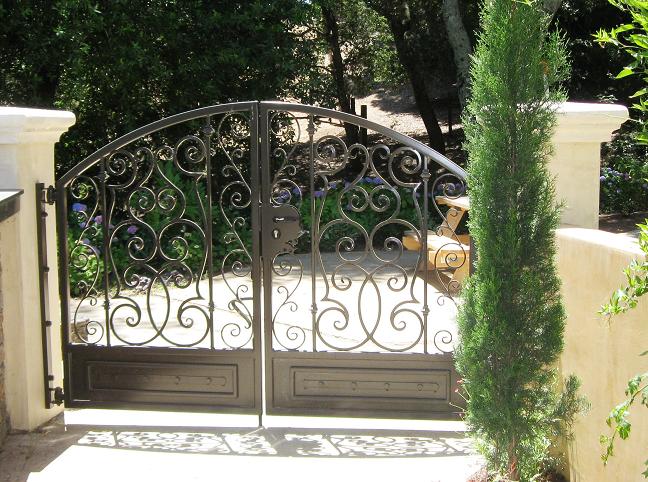The luxury of
not having to get out of your car, in the pouring rain, to manually open your driveway gate, because you installed an automatic gate operator, is priceless. I know that gate automation is expensive, the operators alone, with so many brands to choose from, are pricey. Then, after you've decided on an operator, there's all those safety devices, whew, it's daunting, not to mention costly.
Let's measure the convenience and safety of automation against the cost of installation. If you have a double swing driveway gate that you want automated, there are several things to consider. There are arm mounted and pad mounted operators; the latter option, being the more expensive one. If your gate is being installed on a flat area, no slope, and your gate weighs less than about 500 pounds, then an arm mounted operator might be just fine for you. There is other criteria to take into consider, such as length of the gate, but we’ll leave that to your installer.
The arm mount units are less money than the pad mounted units. You don't have to deal with seeing the large unit sitting offset next to your gate post, and you don’t have to install a concrete pad for it to sit on. The arm mounted unit control box normally mounts right onto your gate post making it less visible. When purchasing an operator, stay in the mid range, don't go too cheap, but you don't have to go too expensive either. Arm units do not accommodate an uphill swing gate, only pad mount units are made for this application.
If you have a situation where you want your gate to open outwards, towards the street, an arm mounted unit can accommodate this feature. There are things to consider before choosing an outward swinging gate. Normally, when someone drives up to your gate, they assume that it will open inwards, so they pull their car right up next to the gate, creating a problem. I would suggest, that as your absolute last option, to have your driveway gate swing outwards.
If you install a telephone entry system, the keypad can be mounted a distance from the gate. The driver will normally pull their car up to the keypad, rather than to the gate, giving them some distance for the outward swinging gate to open. Not everyone needs a telephone entry system, and they add additional cost, so an alternative would be to install a sign on the gate that alerts the driver about the swing direction.
It's important to consider safety options when installing gate operators. Most people think that when they have a gate operator installed, it will automatically close behind their car. This will occur only if you have the correct safety devices in place. If you don't, then the gate must be opened, and shut, using a remote like your garage door opener.
When discussing gate automation, you might hear the term "Loop Detectors" or "Safety Loops" or "Exit Loop", these all apply to safety devices. Loop detectors are a group of wires that are installed into your driveway. Once installed, the loops detect the presence of metal. This detection tells the gate operator not to open or close, eliminating the issue of the gate closing or opening on your vehicle. If you have loop detectors installed, then the operator will close the gate automatically, after sensing that your vehicle is clear and only when it's safe.
An exit loop is also a detector that is installed in your driveway. When you are leaving your property, that loop senses the presence of metal and opens the gate automatically. There is a safety loop that is installed closer to the gate, after the exit loop, which detects the presence of metal too so that the gate won't close on your car until you drive completely through. There are so many wonderful devices available and all to make our lives easier and safer.
There are also safety edges that are installed right on to the edge of your gate. These edges help to detect objects. Let's not forget photo eyes, they are installed on each side of the gate and are intended to detect the presence of an obstacle when the infrared light beam is interrupted. There are more safety options out there, but we’ll address those at a later date.
The bottom line is, that automating your gate will help make your life easier, you'll use your gate more often, and it's more difficult for the gate to be manually pushed opened, helping to detour strangers. Automating is really a win, win situation.




